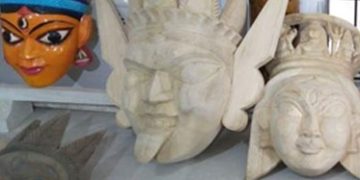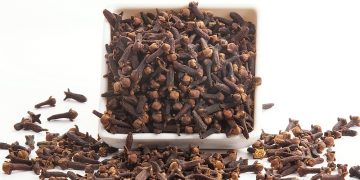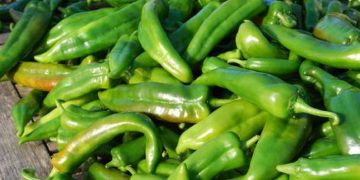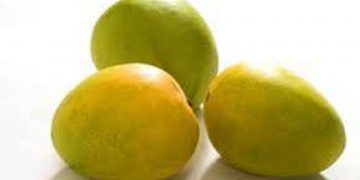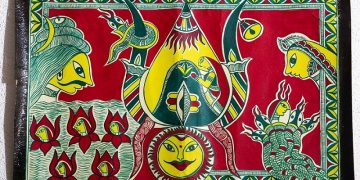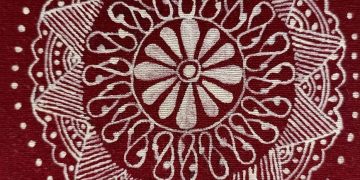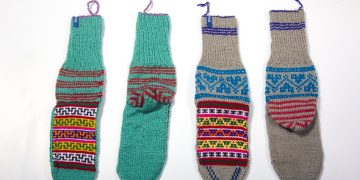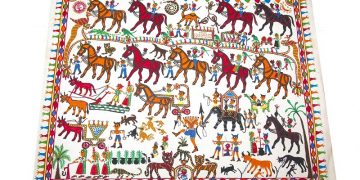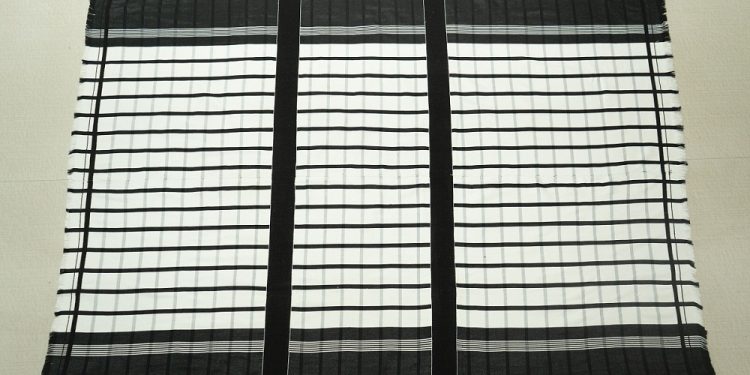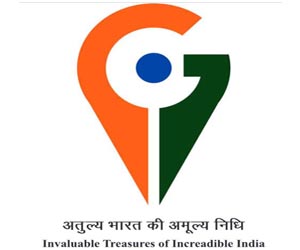Ngotekherh is a popular traditional cloth of the Mizo people. It is a delicately sewn cloth or fabric woven out of a loin-loom. The original Ngotekherh was plain white, rectangular in shape with only two black stripes of 3 of 4 inches broad each running in traverse direction at a distance of about 1/3rd of the whole length from both edge of the puan. This stripping was originally called “Thaihruih” and along the perimeter was embedded a small black and white stripes called “kuthruih” also known as “kherh”. Ngotekherh has gone through changes with the passage of time to keep pace with modern styles and trends. In order to ensure the uniform design on puan, the weavers have to maintain proper precision and detailed measurement which shows the skills used in making of the cloth. Ngotekherh is woven in two pieces lengthwise and are sewn together (called “Zungthui”, meaning sewn together or stitched by hand) in the middle forming a complete puan. Weaving of the Ngotekherh requires great expertise since the quality of one is assessed mostly on the basis of the absence of white streaks on the black Hruih/ Kherh, black borders and black stripes and also the smoothness and fineness of the Hruih/ Kherh.

“An India where Intellectual Property stimulates creativity and innovation for the benefit of all” is the vision of our National IPR Policy.
Intellectual Property Rights is an inevitable tool for today’s globalized economy.
Learn more
Categories
- Adilabad
- Agriculture
- Andhra Pradesh
- Assam
- Azamgarh
- Bastar
- Bhadohi
- Bihar
- Chhattisgarh
- Chikkaballapur
- Coimbatore
- Darjeeling
- Delhi
- Dhalai
- Dindigul
- Ernakulam
- Firozabad
- Food Stuff
- Ganjam
- Ghazipur
- Goa
- Goods Type
- Gujarat
- Guntur
- Handicraft
- Himachal Pradesh
- Idukki
- India
- Indore
- Jaipur
- Jammu & Kashmir
- Jharkhand
- Kamrup
- Kanchipuram
- Kangra
- Kannauj
- Kannur
- Kanpur Nagar
- Karnataka
- Kerala
- Kishtwar
- Kohima
- Koraput
- Kozhikode
- Kullu
- Lucknow
- Madhya Pradesh
- Maharashtra
- Manipur
- Manufactured
- Meerut
- Mirzapur
- Mizoram
- Moradabad
- Muzaffarpur
- Nagaland
- Nashik
- Natural
- North District
- North Tripura
- One District One Product
- Orissa
- Puducherry
- Pune
- Rajasthan
- Ramanagara
- Ratnagiri
- Saharanpur
- Salem
- Satara
- Sikkim
- Sipahijala
- Sitamarhi
- Solapur
- Sonitpur
- South Goa
- Sri Potti Sriramulu Nellore
- Surendranagar
- Tamil Nadu
- Telangana
- Textile
- Tripura
- Uncategorized
- Uttar Pradesh
- Uttarakhand
- Warangal
- West Bengal
- West Tripura
Browse by Tag
2014
2021
Agriculture
Andhra Pradesh
appliance
Arts
Assam
Bihar
carpet
Chhattisgarh
Clothes
Cotton
Fabric
Food Stuff
Fruit
Goa
granite
grinders
Gujarat
Handicraft
Himachal Pradesh
India
Jammu & Kashmir
Karnataka
Kerala
Madhya Pradesh
Maharashtra
Manufactured
Nagaland
Orissa
Paintings
Puducherry
Rajasthan
Rice
Saree
Sarees
Sikkim
Silk
Tamil Nadu
Telangana
Textile
Uttarakhand
Uttar Pradesh
West Bengal
woven
Recent News
© 2022 GIIndia - giindia.gov.in Invaluable Treasures of Incredible India.


